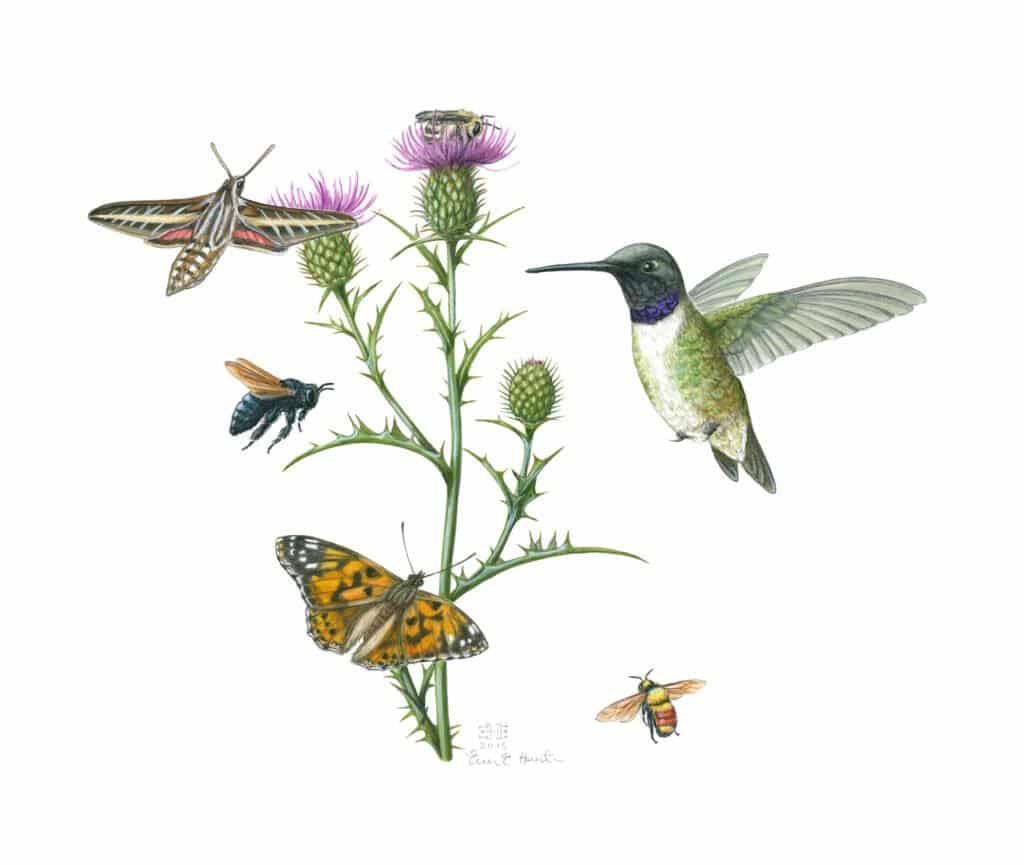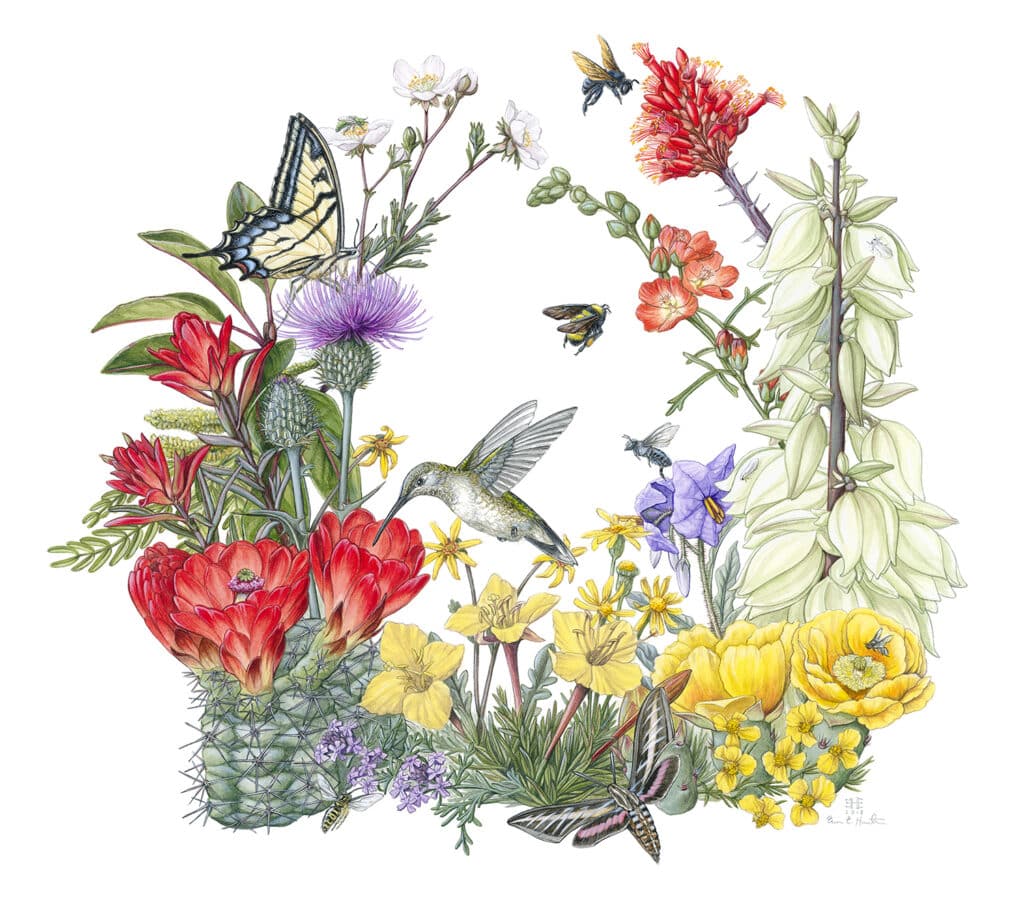For the past couple of weeks, as midsummer coastal fog has finally given way to warm late summer sunshine and warmth, I’ve noticed a lot more insect activity in my garden—painted lady butterflies, yellow-faced bumblebees, grasshoppers whose coral-pink wings flash when they leap ahead of me. In the evenings, an old favorite appears: the white-lined sphinx moth (Hyles lineata), hovering at my red valerian or at the neighbor’s agapanthus. This year there are a lot more than usual, maybe because of the deluge of rain over the winter. They are fast-moving and it’s hard to see them at dusk, but the kids and I have been able to get a few good videos with the aid of a headlamp.

White-lined Sphinx Moth and Dune Evening Primrose • Hyles lineata and Oenothera deltoides • Colored pencil on bristol, 2007
I first became intrigued with these moths as a recent graduate from the UCSC science illustration program; my then-fiancé had developed the habit (which continues today) of bringing me interesting insects he found when he was out in the field for work. One day he brought me a moth, which he’d pinned to a piece of corrugated cardboard. It was thick-bodied and narrow-winged, with beautiful salmon-pink markings on the underwings. A little research revealed that it was a white-lined sphinx moth, a member of the family Sphingidae. Other species in this family include the clearwing moth, the death’s head hawkmoth, and perhaps most famously, Darwin’s hawkmoth. (In 1862, Darwin was sent an orchid from Madagascar with a foot-long nectar spur and predicted the existence of a moth with an equally long proboscis to pollinate it; he was ridiculed at the time, but two decades later—after his death—the moth was found.)
I illustrated my white-lined sphinx moth nectaring on dune evening primrose and gave it as a wedding gift; I painted it alongside other pollinators in artist-in-residence pieces for Grand Canyon National Park and Guadalupe Mountains National Park. I painted my moth on teal-blue handmade paper and donated it to a museum fundraiser, and painted it larger-than-life in a big piece of California moths. Its big eyes, slender legs, and chocolate-brown-and-white markings have become so familiar to me that I can draw it from memory.

Wheeler’s Thistle and Pollinators • Acrylic on watercolor paper, 2015 • Completed as an artist-in-residence piece at the North Rim of Grand Canyon National Park
Why do I keep coming back to this moth? Partially it’s because I have a good specimen—I can turn it in space, draw it from different angles, see how leg segments attach and examine the wing patterning as closely as possible. Partially it’s because this is a common moth, so I can see it in my own habitat (as well as in places all over the country; it’s found all over North America). I don’t have to travel to see this beauty; it’s there, existing right alongside me. I can encourage it by planting host plants for its caterpillars and flowers for the adults. Next year I hope to find a caterpillar and raise it through the larval and pupal stages. My kids and I did this with a ceanothus moth and the astonishing process of metamorphosis still has me floored.
The other night, my husband brought me another white-lined sphinx moth. This one was alive—he’d caught it under our porch light and brought it inside in a jar, so the kids and I could admire it. We took pictures and videos and oohed and aahed over it, before walking it back out to the front porch. My daughter opened the lid of the jar and it winged off, disappearing into the warm night.

Guadalupe Mountains Insects and Wildflowers • Acrylic on watercolor paper, 2018 • Completed as an artist-in-residence at Guadalupe Mountains National Park


